Events
| Name | organizer | Where |
|---|---|---|
| MBCC “Doing Business with Mongolia seminar and Christmas Receptiom” Dec 10. 2025 London UK | MBCCI | London UK Goodman LLC |
NEWS

United Airlines to Launch Flights to Mongolia in May www.montsame.mn
United Airlines LLC of the United States will operate flights from Mongolia to the United States via Japan starting on May 1, 2025.
The National Civil Aviation Center of Mongolia and United Airlines LLC signed an Agreement on Providing Passenger Safety Services on April 28, 2025. The Agreement includes provisions on meeting international legal norms and U.S. air transport standards, as well as additional services.
United Airlines announced that it will expand its global network by launching flights to eight additional destinations, including Mongolia, in 2025. The Airline will conduct flights to Mongolia three times a week.
By order of the Minister of Roads and Transport of Mongolia, a Working Group in charge of preparing for the launch of direct flights between Mongolia and the United States was established in 2023.
A contract on conducting a technical assessment and providing consulting services for the Aviation Safety Audit (IASA) of the US Federal Aviation Administration was signed with the Wicks Group Consulting, as this law firm won the bid in accordance with the Law on Procurement of Goods, Works, and Services with State and Local Funds.
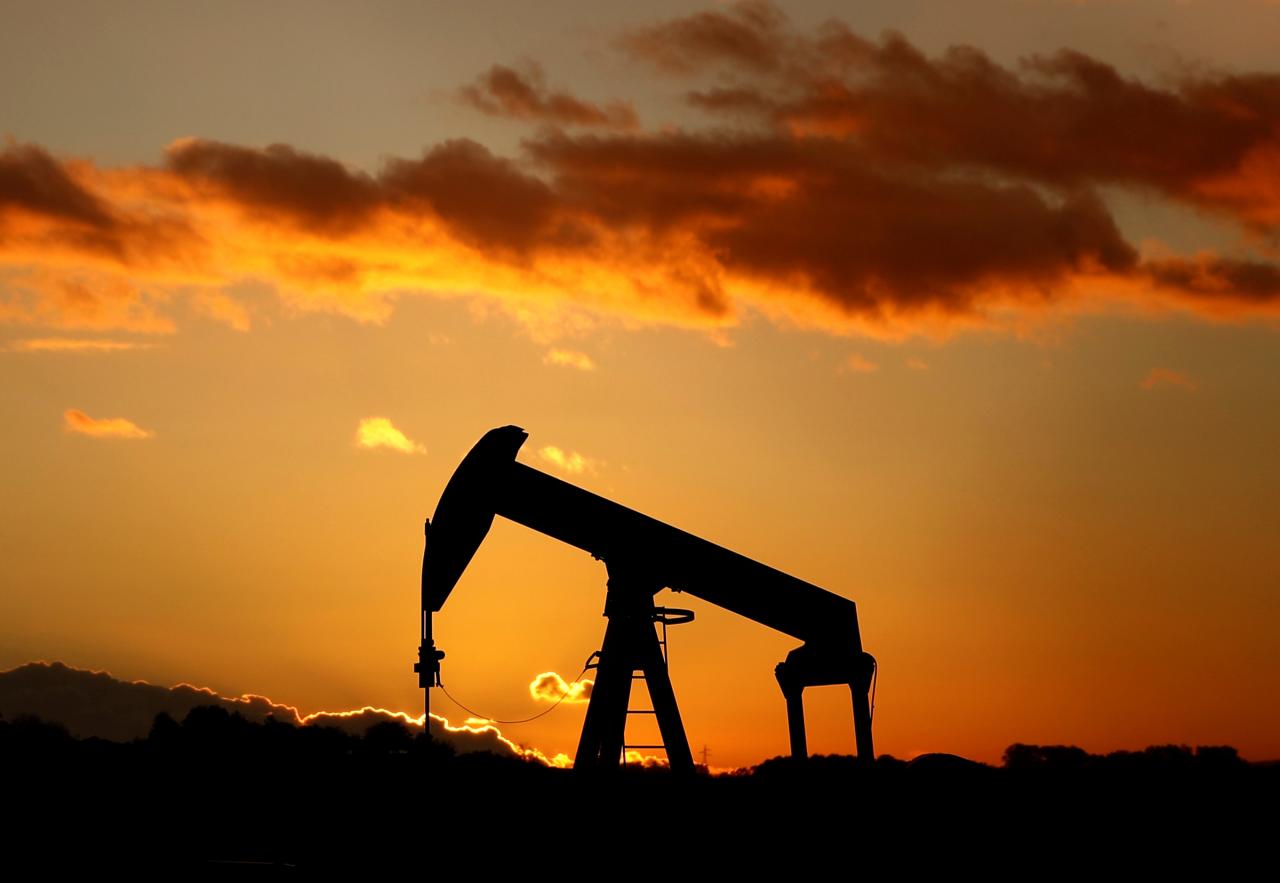
Signature of Oil Sales Agreement for Block XX Production www.research-tree.com
LONDON, 28 April 2025: Petro Matad Limited, the AIM quoted Mongolian oil company is pleased to announce the signature of an Oil Sales Agreement for Block XX crude oil.
On 28 April 2025, Petro Matad and PetroChina Daqing Tamsag, the operator of neighbouring Block XIX, signed the Oil Sales Agreement covering storage, processing, transport and export of Block XX crude oil production. Petro Matad's invoices for the production from the Heron 1 well for the period 24 October 2024 to 31 March 2025 have been submitted and, under the agreement, will be processed for payment during the month of May.
Point forward, Petro Matad is required to submit an invoice for each month's production on or before the tenth day of the subsequent month and payment will be made during the last week of the month based on the average benchmarked price of Daqing crude oil for the month of production. Custody transfer of Block XX oil takes place at the Block XIX processing facilities and PetroChina is responsible for processing, transport and export of the crude to the buyers in China.
Mike Buck, CEO of Petro Matad, said:
"We are delighted to have signed the oil sales agreement for the commercialisation of Block XX production. This involved a number of firsts for Mongolia and whilst the process was slow, we are grateful to the Mongolian authorities and to PetroChina for their support. We look forward to establishing a cooperative routine in the sales process in the same way that the field crews in Blocks XIX and XX have done in the production operations over the last 6 months and to receiving payment for all the oil produced to date during the month of May."
Further operational updates will be provided in due course.
About Petro Matad
Petro Matad is the parent company of a group focused on oil exploration, development and production in Mongolia. Currently, Petro Matad holds a 100% working interest and the operatorship of the Matad Block XX Production Sharing Contract with the government of Mongolia. Block XX has an area of 214 square kilometres in the far eastern part of the country. The Company also holds a 100% working interest and operatorship of the Borzon Block VII Production Sharing Contract with an area of 41,141 square kilometres in southern central Mongolia.
Petro Matad Limited is incorporated in the Isle of Man under company number 1483V. Its registered office is at Victory House, Prospect Hill, Douglas, Isle of Man, IM1 1EQ.
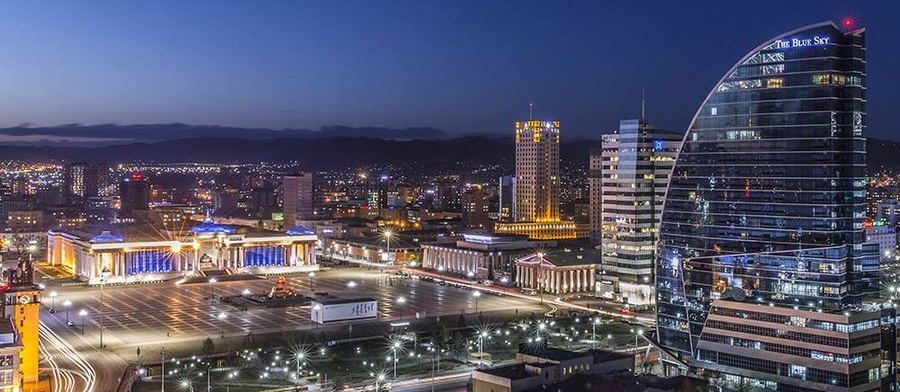
Mongolia issues e-visas to 11,575 foreigners in Q1 www.xinhuanet.com
A total of 11,575 foreigners were granted Mongolian electronic visas (e-visas) in the first quarter of 2025, marking a 4.9 percent increase compared to the same period in 2024, local media reported on Monday, citing Mongolia's Immigration Agency.
During the same period, the country's immigration agency issued 3,629 residence permits in Mongolia, and extended 7,411 residence permits. The residence permit issuance decreased by 5.3 percent compared to the previous year.
Currently, Mongolia's economy relies most heavily on the export of mineral resources. Tourism promotion is considered one of the priority areas for diversifying the country's economy and increasing the competitiveness of the domestic tourism sector in the context of global competition.
According to Mongolia's Immigration Agency, e-visas for foreigners were officially launched on Oct. 1, 2021 in Mongolia. In 2024, Mongolia issued e-visas to almost 92,427 foreign citizens.
Mongolia has implemented this shift in a strategic move aimed at boosting tourism and attracting foreign tourists.

Korea an ideal partner to help Mongolia grow, Seoul's envoy says www.koreajoongangdaily.joins.com
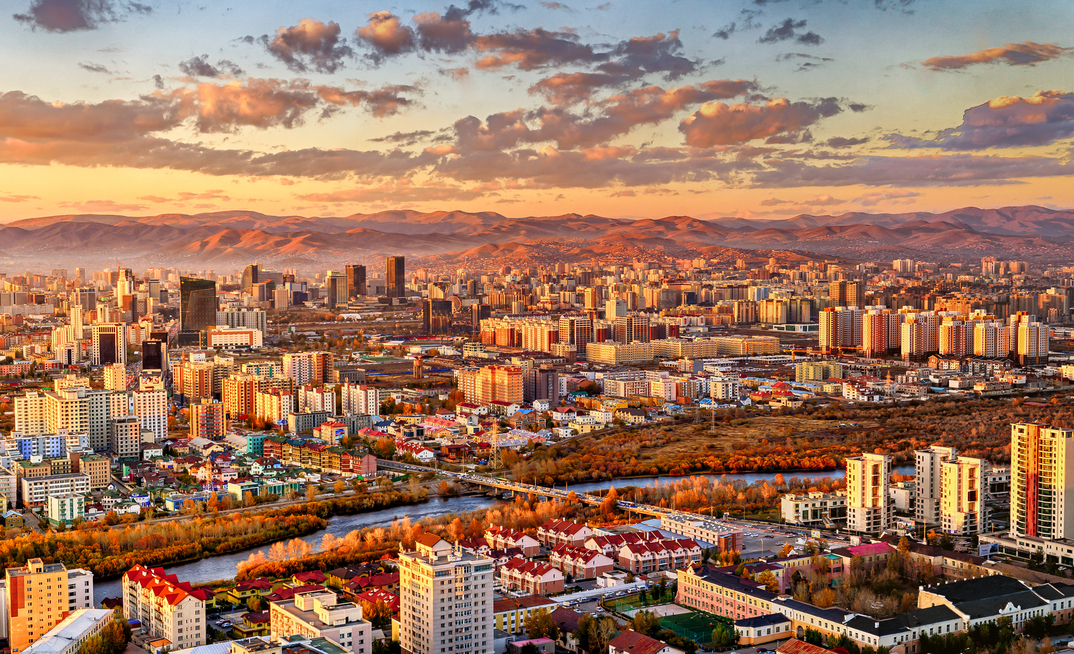
Mongolia to Host the 30th Annual General Meeting of Asia Securities Forum www.montsame.mn
The 30th Annual General Meeting of the Asia Securities Forum will take place on September 10-13, 2025, in Ulaanbaatar, Mongolia.
The Mongolian Association of Securities Dealers will host the 30th Annual General Meeting of the Asia Securities Forum, a key event in the Asia-Pacific securities industry.
The ASF Annual General Meeting is an important event as it brings together representatives of securities associations, regulators, and market leaders from the Asia-Pacific region, including Australia, the People's Republic of China, Japan, the Republic of Korea, and Singapore.
The General Meeting will be organized in Mongolia for the first time, and it offers opportunities to present the progress of the Mongolian stock market and its highlight projects to the participants.
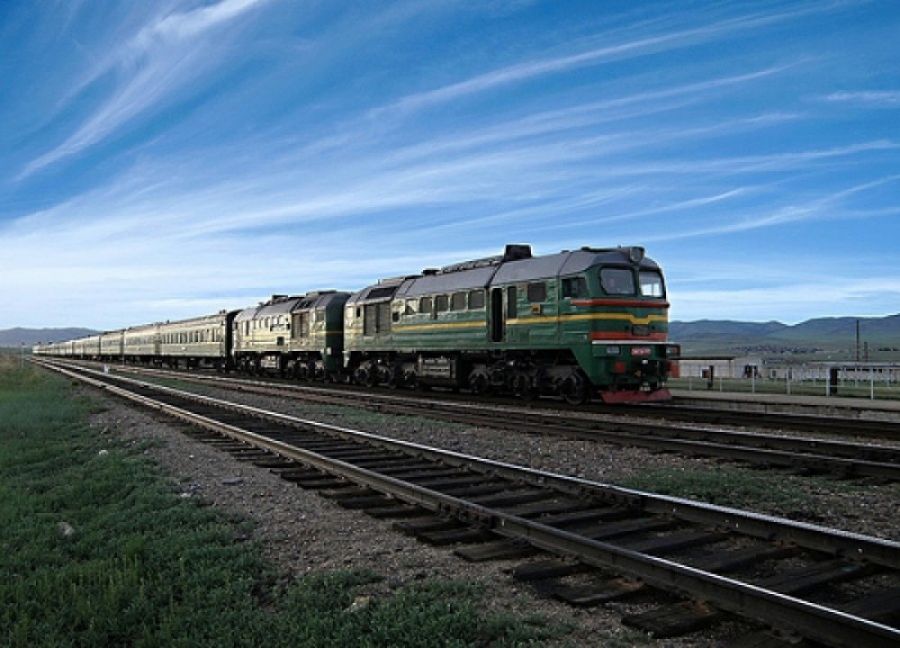
Bagakhangai-Khushig Valley Railway Project launches www.ubpost.mn
On April 25, the government officially launched the Bagakhangai-Khushig Valley branch railway project, which marks the beginning of a major infrastructure initiative that includes building a new Transport Logistics Center 13 kilometers south of the Chinggis Khaan International Airport.
At the opening ceremony, Prime Minister L.Oyun-Erdene declared, “Today, we have opened a new page in history. Since summer is short, if we miss one summer, it is like missing a whole year. We need to plan well in the winter and quickly carry out construction in the summer. Therefore, construction work should be started as early as possible.”
The prime minister outlined an ambitious infrastructure agenda, announcing that work would begin next month on connecting the Gashuunsukhait-Gantsmod port border, followed by projects linking the Shiveekhuren, Bichigt, Khangi and Mandal ports. He confirmed the Erdeneburen hydropower station construction would commence in June as approved at the last cabinet meeting, with work on the Eg River station starting next week.
In the capital region, major road projects including the Tuul highway and two ring roads will soon begin construction. The premier described the railway as “strategically important” and part of efforts to “revive” Hunnu city, noting that investment in the area over the next three years would equal the total investment in Tuv Province over the past three decades. “If we can connect, we will have money, and if we have money, we can build, and by building, we can improve our quality of life. If we can do this, we can also protect our independence,” L.Oyun-Erdene stated, framing the infrastructure push as crucial for national development.
Minister of Road and Transportation Development J.Delgersaikhan provided technical details, revealing that the 150-kilometer railway would significantly reduce traffic congestion. “Every day, residents of the capital spend 144 minutes stuck and waiting at railway crossings. This time will be reduced to 40 minutes from next October,” he said.
The Transport Logistics Center, to be built on 400 hectares of land allocated by Hunnu City officials, will serve as a hub for the new railway with a 25-ton carrying capacity. Private companies will be permitted to construct their own warehouses within the center.
With an initial budget of 840 billion MNT, the project combines 100 billion MNT from Mongolian Railway’s existing funds with bridge financing arranged by the Development Bank in cooperation with five commercial banks. Officials expect increased coal exports through improved border connections to generate revenue for loan repayment. Construction challenges include building a one-kilometer columnar bridge, which is a complex undertaking given Mongolia’s limited pool of only seven qualified bridge construction companies. Some 2,500 domestic workers will build the lower structure, while 20,000 tons of rails will be imported.
Preparatory work including geodetic and geological surveys is complete, with water wells already dug. The unique ridge-top location eliminates the need for land clearance, though a 32-meter excavation in deep land will require specialized mining equipment. Officials emphasized that all construction would use domestic capabilities except for rail imports. As the Mongolian Railway team begins round-the-clock work to complete the project within four months, the Road Development Center will monitor progress.
Ulaanbaatar Mayor Kh.Nyambaatar highlighted how the new railway would solve long-standing urban logistics challenges, particularly the current practice of using the unsuitable and potentially hazardous Tolgoit station for unloading operations. By redirecting freight handling to purpose-built facilities along the new corridor, the project will significantly reduce congestion and safety risks in the capital while supporting broader efforts to decentralize Ulaanbaatar’s overcrowded infrastructure.
Kh.Nyambaatar outlined comprehensive plans for Hunnu City’s development as an eco-friendly urban center, beginning with ambitious geothermal exploration set to commence in August. Drilling will reach 3,000 meters depth in the Sergelen soum area, where geological assessments suggest strong potential for tapping into sustainable heating solutions. “If successful, this initiative could allow Hunnu City to become Mongolia’s first major urban area completely free from coal dependence,” the mayor explained, noting this would represent a major breakthrough in sustainable urban development.
Infrastructure preparations are already underway, with trunk line networks completed and tenders for branch line designs soon to be announced. The city plans to begin road construction next year while simultaneously developing a 300 MW renewable energy complex combining solar, wind and battery storage through innovative public-private partnerships.
‘1.3 trillion MNT project secures funding through bank reforms’
Development Bank Executive Director Z.Narantuya provided financial details, revealing the project’s total 1.3 trillion MNT cost will be supported through enhanced bank capitalization and collaborative financing with five domestic institutions. “With 1.2 trillion MNT in receivables recently settled and plans for domestic and international securities issuance, we have established a robust financial framework for this transformative infrastructure,” Z.Narantuya stated.
The railway itself, featuring 115 dedicated livestock tunnels and requiring 2.5 million cubic meters of earthworks, remains on track for August 25 completion. Its operational launch will initiate a phased transition of freight operations away from urban centers, with complementary highway projects to Dundgovi Province and Songinokhairkhan District already in planning stages.
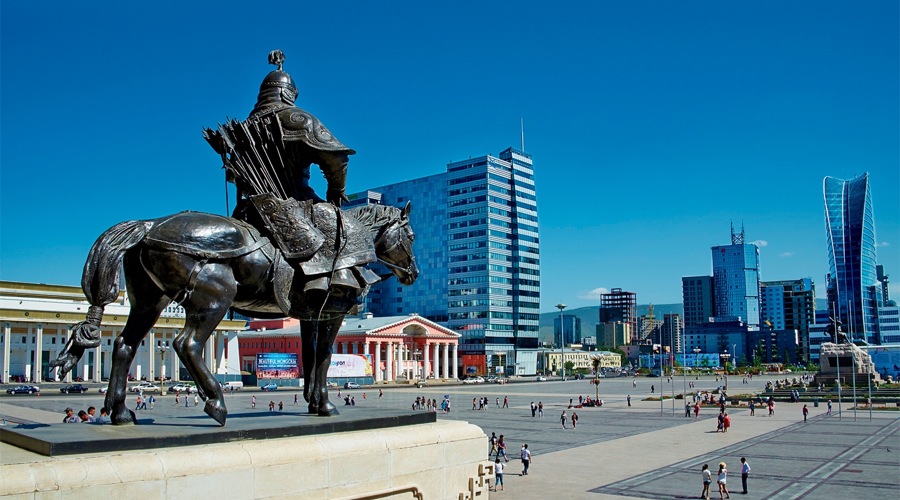
The Mongolian business environment and FDI: Challenges and opportunity www.melvilledalai.com
Nietzsche’s aphorism of “What doesn’t kill you makes you stronger” is my optimistic view about Mongolian business environment,
including foreign investments, although several factors are nearly undermining foreign direct investment and general business environment. You may have encountered or heard about challenges such as corruption, crony capitalism, a weak legal framework, inconsistent law enforcement, and unstable policies and regulations. There are also economic and commercial
drawbacks, including a small market, high risk of currency depreciation, and costly logistics. Larger investors might worry about Mongolia’s geography—sandwiched between Russia and China—and the associated geopolitical risks. Meanwhile, existing investors often face daily hurdles like government bureaucracy, rising nationalism, and erratic application of laws. This list isn’t
exhaustive; it omits “surprises,” originally tied to major events like elections but now occurring more frequently. I’ll discuss a recent surprise later, but first, let’s focus on the key obstacle.
The above-mentioned issues are undeniable and have persisted since the 1990s. But which is the most detrimental? Opinions differ widely, though I’m not here to rank them. Instead, I ask: do these challenges share a common root or cause? I argue that “internal politics” is the primary cause. By this, I mean politically motivated actions, conflicts, inactions, and PR efforts within Mongolia. You might wonder why I focus on internal politics when Mongolia is a proud democracy—the only one
in Central Asia. Indeed, we cherish our democratic status, but as a young democracy, we’ve faced significant political turbulence.
1. THE RECENT SURPRISE: STRATEGIC DEPOSITS
What is the recent surprise? This relates to the interpretation and application of the concept of “Strategic Deposit”. This concept is not a new, but the Minerals Law was amended on 19 April 2024 to revise certain provisions related to Strategic Deposits, aligning them with the amendments to the Constitution. Pursuant to this new amendments under the Minerals Law, the state shall hold up to 34% or 50% of the entity holding the license, free of charge, and potentially without making any investment. Obviously, this creates various uncertainties and suprises, specially with respect to the companies which have been operating and mining. Some could argue this is potentially “expropriation” and others could argue that the state has this power under the Constitution. The both sides have their strong arguments as the relevant implementation, interpretation and process is vague and
subjective to the Parliamentary discretion.
The Objective of these amendments to the Constitution and Minerals Law were ultimately designed to maximize the benefits from natural resources for the benefits of its citizens. See the full article on the link https://www.melvilledalai.com/.../the-mongolian-business...
BY Erdenedalai Odkhuu, Partner

Domestic oil refinery to supply 80,000 tons of jet fuel yearly www.ubpost.mn
During a briefing on April 25, Minister of Industry and Mineral Resources Ts.Tuvaan provided updates on Mongolia’s ambitious oil refinery project, revealing plans to accelerate the timeline for first production. The government now aims to have the refinery operational by the third quarter of 2027, ahead of the originally scheduled first quarter of 2028 target.
Minister Ts.Tuvaan emphasized the project’s national importance, noting the critical need to secure Mongolia’s 1.5 million-ton crude oil supply. Discussions with PetroChina Dachin Tamsag to boost crude oil production to 750,000 tons this year have encountered difficulties, though officials remain committed to achieving this goal.
The project faces multiple challenges that require resolution. Financial reconciliations with PetroChina, including outstanding tax payments, audits and social security contributions not covered by existing agreements, need to be settled. At the local level, cooperation issues persist with provincial and soum leaders, while Mongolian NGOs, particularly women-led organizations, continue voicing concerns about the project. Recent tensions, including Chinese embassy complaints about security incidents, have added another layer of complexity to the bilateral energy cooperation.
Once completed, the refinery will mark a major milestone in Mongolia’s energy independence. With an expected annual production of 80,000 tons of aviation fuel, the facility will allow domestic airlines to source their fuel needs locally rather than relying on imports.
Minister Ts.Tuvaan stressed that overcoming the current obstacles remains essential for Mongolia’s strategic energy projects. The accelerated timeline demonstrates the government’s determination to push forward with this key infrastructure development, even as it works to address the various operational, financial, and diplomatic challenges that have emerged. The success of this project could significantly enhance Mongolia’s energy security and economic self-sufficiency in the coming years.
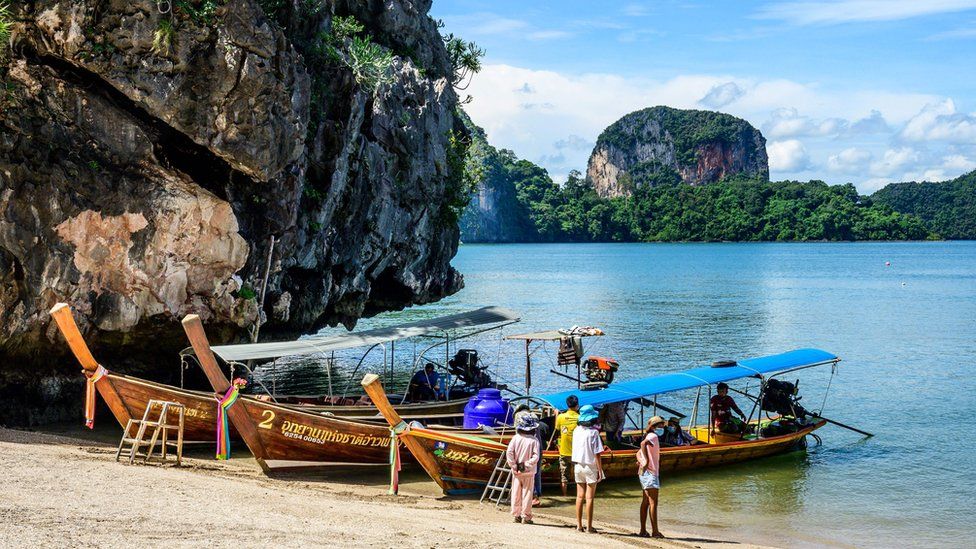
Business offer from MBD Thailand www.mongolianbusinessdatabase.com
MBD Thailand is offering broad range of food products from Thailand’s famous manufacturers including Ampol Foods, BKC Thai Cuisine and Yan Wal Yun Corporation Group to Mongolian food importers and wholesale companies. Please contact 99066062 contact@mongolianbusinessdatabase.com and dashnyam@mongolianbusinessdatabase.com for information in details.
...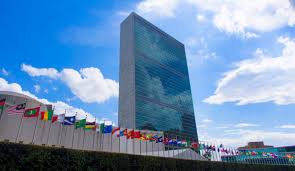
Stakeholder Feedback Workshop: Bank of Mongolia’s ESG Risk Based Supervision Framework 07 May 2025, 09:00 - 12:30 Ulaanbaatar Time | By invitation only www.unescap.org
Mongolia is taking bold steps toward sustainable finance by integrating Environmental, Social, and Governance (ESG) principles into its financial sector. Strong ESG frameworks are critical for managing climate and sustainability risks, boosting transparency, attracting investment, and aligning with global goals like the Paris Agreement and the SDGs.
Following the introduction of ESG reporting guidelines and the move toward mandatory disclosures, the next step is embedding ESG risk management into financial supervision. In collaboration with ESCAP, the Bank of Mongolia is exploring how ESG risks can be systematically identified, assessed, and managed across the banking sector.
Join us for this important workshop as we present the findings of the ESG Risk-Based Supervision Framework study. The sessions will cover the fundamentals of ESG risk supervision, current practices, areas for improvement, and ways the Bank of Mongolia can strengthen its supervisory framework to better manage ESG risks. This is also an opportunity for key stakeholders to provide feedback and help shape the next phase of Mongolia’s sustainable finance journey.
Together, we can build a more resilient, inclusive, and sustainable financial system for Mongolia’s future.
for more information, please contact
Macroeconomic Policy and Financing for Development Division
+66 2 288-1234
escap-mpfd@un.org
- «
- 1
- 2
- 3
- 4
- 5
- 6
- 7
- 8
- 9
- 10
- 11
- 12
- 13
- 14
- 15
- 16
- 17
- 18
- 19
- 20
- 21
- 22
- 23
- 24
- 25
- 26
- 27
- 28
- 29
- 30
- 31
- 32
- 33
- 34
- 35
- 36
- 37
- 38
- 39
- 40
- 41
- 42
- 43
- 44
- 45
- 46
- 47
- 48
- 49
- 50
- 51
- 52
- 53
- 54
- 55
- 56
- 57
- 58
- 59
- 60
- 61
- 62
- 63
- 64
- 65
- 66
- 67
- 68
- 69
- 70
- 71
- 72
- 73
- 74
- 75
- 76
- 77
- 78
- 79
- 80
- 81
- 82
- 83
- 84
- 85
- 86
- 87
- 88
- 89
- 90
- 91
- 92
- 93
- 94
- 95
- 96
- 97
- 98
- 99
- 100
- 101
- 102
- 103
- 104
- 105
- 106
- 107
- 108
- 109
- 110
- 111
- 112
- 113
- 114
- 115
- 116
- 117
- 118
- 119
- 120
- 121
- 122
- 123
- 124
- 125
- 126
- 127
- 128
- 129
- 130
- 131
- 132
- 133
- 134
- 135
- 136
- 137
- 138
- 139
- 140
- 141
- 142
- 143
- 144
- 145
- 146
- 147
- 148
- 149
- 150
- 151
- 152
- 153
- 154
- 155
- 156
- 157
- 158
- 159
- 160
- 161
- 162
- 163
- 164
- 165
- 166
- 167
- 168
- 169
- 170
- 171
- 172
- 173
- 174
- 175
- 176
- 177
- 178
- 179
- 180
- 181
- 182
- 183
- 184
- 185
- 186
- 187
- 188
- 189
- 190
- 191
- 192
- 193
- 194
- 195
- 196
- 197
- 198
- 199
- 200
- 201
- 202
- 203
- 204
- 205
- 206
- 207
- 208
- 209
- 210
- 211
- 212
- 213
- 214
- 215
- 216
- 217
- 218
- 219
- 220
- 221
- 222
- 223
- 224
- 225
- 226
- 227
- 228
- 229
- 230
- 231
- 232
- 233
- 234
- 235
- 236
- 237
- 238
- 239
- 240
- 241
- 242
- 243
- 244
- 245
- 246
- 247
- 248
- 249
- 250
- 251
- 252
- 253
- 254
- 255
- 256
- 257
- 258
- 259
- 260
- 261
- 262
- 263
- 264
- 265
- 266
- 267
- 268
- 269
- 270
- 271
- 272
- 273
- 274
- 275
- 276
- 277
- 278
- 279
- 280
- 281
- 282
- 283
- 284
- 285
- 286
- 287
- 288
- 289
- 290
- 291
- 292
- 293
- 294
- 295
- 296
- 297
- 298
- 299
- 300
- 301
- 302
- 303
- 304
- 305
- 306
- 307
- 308
- 309
- 310
- 311
- 312
- 313
- 314
- 315
- 316
- 317
- 318
- 319
- 320
- 321
- 322
- 323
- 324
- 325
- 326
- 327
- 328
- 329
- 330
- 331
- 332
- 333
- 334
- 335
- 336
- 337
- 338
- 339
- 340
- 341
- 342
- 343
- 344
- 345
- 346
- 347
- 348
- 349
- 350
- 351
- 352
- 353
- 354
- 355
- 356
- 357
- 358
- 359
- 360
- 361
- 362
- 363
- 364
- 365
- 366
- 367
- 368
- 369
- 370
- 371
- 372
- 373
- 374
- 375
- 376
- 377
- 378
- 379
- 380
- 381
- 382
- 383
- 384
- 385
- 386
- 387
- 388
- 389
- 390
- 391
- 392
- 393
- 394
- 395
- 396
- 397
- 398
- 399
- 400
- 401
- 402
- 403
- 404
- 405
- 406
- 407
- 408
- 409
- 410
- 411
- 412
- 413
- 414
- 415
- 416
- 417
- 418
- 419
- 420
- 421
- 422
- 423
- 424
- 425
- 426
- 427
- 428
- 429
- 430
- 431
- 432
- 433
- 434
- 435
- 436
- 437
- 438
- 439
- 440
- 441
- 442
- 443
- 444
- 445
- 446
- 447
- 448
- 449
- 450
- 451
- 452
- 453
- 454
- 455
- 456
- 457
- 458
- 459
- 460
- 461
- 462
- 463
- 464
- 465
- 466
- 467
- 468
- 469
- 470
- 471
- 472
- 473
- 474
- 475
- 476
- 477
- 478
- 479
- 480
- 481
- 482
- 483
- 484
- 485
- 486
- 487
- 488
- 489
- 490
- 491
- 492
- 493
- 494
- 495
- 496
- 497
- 498
- 499
- 500
- 501
- 502
- 503
- 504
- 505
- 506
- 507
- 508
- 509
- 510
- 511
- 512
- 513
- 514
- 515
- 516
- 517
- 518
- 519
- 520
- 521
- 522
- 523
- 524
- 525
- 526
- 527
- 528
- 529
- 530
- 531
- 532
- 533
- 534
- 535
- 536
- 537
- 538
- 539
- 540
- 541
- 542
- 543
- 544
- 545
- 546
- 547
- 548
- 549
- 550
- 551
- 552
- 553
- 554
- 555
- 556
- 557
- 558
- 559
- 560
- 561
- 562
- 563
- 564
- 565
- 566
- 567
- 568
- 569
- 570
- 571
- 572
- 573
- 574
- 575
- 576
- 577
- 578
- 579
- 580
- 581
- 582
- 583
- 584
- 585
- 586
- 587
- 588
- 589
- 590
- 591
- 592
- 593
- 594
- 595
- 596
- 597
- 598
- 599
- 600
- 601
- 602
- 603
- 604
- 605
- 606
- 607
- 608
- 609
- 610
- 611
- 612
- 613
- 614
- 615
- 616
- 617
- 618
- 619
- 620
- 621
- 622
- 623
- 624
- 625
- 626
- 627
- 628
- 629
- 630
- 631
- 632
- 633
- 634
- 635
- 636
- 637
- 638
- 639
- 640
- 641
- 642
- 643
- 644
- 645
- 646
- 647
- 648
- 649
- 650
- 651
- 652
- 653
- 654
- 655
- 656
- 657
- 658
- 659
- 660
- 661
- 662
- 663
- 664
- 665
- 666
- 667
- 668
- 669
- 670
- 671
- 672
- 673
- 674
- 675
- 676
- 677
- 678
- 679
- 680
- 681
- 682
- 683
- 684
- 685
- 686
- 687
- 688
- 689
- 690
- 691
- 692
- 693
- 694
- 695
- 696
- 697
- 698
- 699
- 700
- 701
- 702
- 703
- 704
- 705
- 706
- 707
- 708
- 709
- 710
- 711
- 712
- 713
- 714
- 715
- 716
- 717
- 718
- 719
- 720
- 721
- 722
- 723
- 724
- 725
- 726
- 727
- 728
- 729
- 730
- 731
- 732
- 733
- 734
- 735
- 736
- 737
- 738
- 739
- 740
- 741
- 742
- 743
- 744
- 745
- 746
- 747
- 748
- 749
- 750
- 751
- 752
- 753
- 754
- 755
- 756
- 757
- 758
- 759
- 760
- 761
- 762
- 763
- 764
- 765
- 766
- 767
- 768
- 769
- 770
- 771
- 772
- 773
- 774
- 775
- 776
- 777
- 778
- 779
- 780
- 781
- 782
- 783
- 784
- 785
- 786
- 787
- 788
- 789
- 790
- 791
- 792
- 793
- 794
- 795
- 796
- 797
- 798
- 799
- 800
- 801
- 802
- 803
- 804
- 805
- 806
- 807
- 808
- 809
- 810
- 811
- 812
- 813
- 814
- 815
- 816
- 817
- 818
- 819
- 820
- 821
- 822
- 823
- 824
- 825
- 826
- 827
- 828
- 829
- 830
- 831
- 832
- 833
- 834
- 835
- 836
- 837
- 838
- 839
- 840
- 841
- 842
- 843
- 844
- 845
- 846
- 847
- 848
- 849
- 850
- 851
- 852
- 853
- 854
- 855
- 856
- 857
- 858
- 859
- 860
- 861
- 862
- 863
- 864
- 865
- 866
- 867
- 868
- 869
- 870
- 871
- 872
- 873
- 874
- 875
- 876
- 877
- 878
- 879
- 880
- 881
- 882
- 883
- 884
- 885
- 886
- 887
- 888
- 889
- 890
- 891
- 892
- 893
- 894
- 895
- 896
- 897
- 898
- 899
- 900
- 901
- 902
- 903
- 904
- 905
- 906
- 907
- 908
- 909
- 910
- 911
- 912
- 913
- 914
- 915
- 916
- 917
- 918
- 919
- 920
- 921
- 922
- 923
- 924
- 925
- 926
- 927
- 928
- 929
- 930
- 931
- 932
- 933
- 934
- 935
- 936
- 937
- 938
- 939
- 940
- 941
- 942
- 943
- 944
- 945
- 946
- 947
- 948
- 949
- 950
- 951
- 952
- 953
- 954
- 955
- 956
- 957
- 958
- 959
- 960
- 961
- 962
- 963
- 964
- 965
- 966
- 967
- 968
- 969
- 970
- 971
- 972
- 973
- 974
- 975
- 976
- 977
- 978
- 979
- 980
- 981
- 982
- 983
- 984
- 985
- 986
- 987
- 988
- 989
- 990
- 991
- 992
- 993
- 994
- 995
- 996
- 997
- 998
- 999
- 1000
- 1001
- 1002
- 1003
- 1004
- 1005
- 1006
- 1007
- 1008
- 1009
- 1010
- 1011
- 1012
- 1013
- 1014
- 1015
- 1016
- 1017
- 1018
- 1019
- 1020
- 1021
- 1022
- 1023
- 1024
- 1025
- 1026
- 1027
- 1028
- 1029
- 1030
- 1031
- 1032
- 1033
- 1034
- 1035
- 1036
- 1037
- 1038
- 1039
- 1040
- 1041
- 1042
- 1043
- 1044
- 1045
- 1046
- 1047
- 1048
- 1049
- 1050
- 1051
- 1052
- 1053
- 1054
- 1055
- 1056
- 1057
- 1058
- 1059
- 1060
- 1061
- 1062
- 1063
- 1064
- 1065
- 1066
- 1067
- 1068
- 1069
- 1070
- 1071
- 1072
- 1073
- 1074
- 1075
- 1076
- 1077
- 1078
- 1079
- 1080
- 1081
- 1082
- 1083
- 1084
- 1085
- 1086
- 1087
- 1088
- 1089
- 1090
- 1091
- 1092
- 1093
- 1094
- 1095
- 1096
- 1097
- 1098
- 1099
- 1100
- 1101
- 1102
- 1103
- 1104
- 1105
- 1106
- 1107
- 1108
- 1109
- 1110
- 1111
- 1112
- 1113
- 1114
- 1115
- 1116
- 1117
- 1118
- 1119
- 1120
- 1121
- 1122
- 1123
- 1124
- 1125
- 1126
- 1127
- 1128
- 1129
- 1130
- 1131
- 1132
- 1133
- 1134
- 1135
- 1136
- 1137
- 1138
- 1139
- 1140
- 1141
- 1142
- 1143
- 1144
- 1145
- 1146
- 1147
- 1148
- 1149
- 1150
- 1151
- 1152
- 1153
- 1154
- 1155
- 1156
- 1157
- 1158
- 1159
- 1160
- 1161
- 1162
- 1163
- 1164
- 1165
- 1166
- 1167
- 1168
- 1169
- 1170
- 1171
- 1172
- 1173
- 1174
- 1175
- 1176
- 1177
- 1178
- 1179
- 1180
- 1181
- 1182
- 1183
- 1184
- 1185
- 1186
- 1187
- 1188
- 1189
- 1190
- 1191
- 1192
- 1193
- 1194
- 1195
- 1196
- 1197
- 1198
- 1199
- 1200
- 1201
- 1202
- 1203
- 1204
- 1205
- 1206
- 1207
- 1208
- 1209
- 1210
- 1211
- 1212
- 1213
- 1214
- 1215
- 1216
- 1217
- 1218
- 1219
- 1220
- 1221
- 1222
- 1223
- 1224
- 1225
- 1226
- 1227
- 1228
- 1229
- 1230
- 1231
- 1232
- 1233
- 1234
- 1235
- 1236
- 1237
- 1238
- 1239
- 1240
- 1241
- 1242
- 1243
- 1244
- 1245
- 1246
- 1247
- 1248
- 1249
- 1250
- 1251
- 1252
- 1253
- 1254
- 1255
- 1256
- 1257
- 1258
- 1259
- 1260
- 1261
- 1262
- 1263
- 1264
- 1265
- 1266
- 1267
- 1268
- 1269
- 1270
- 1271
- 1272
- 1273
- 1274
- 1275
- 1276
- 1277
- 1278
- 1279
- 1280
- 1281
- 1282
- 1283
- 1284
- 1285
- 1286
- 1287
- 1288
- 1289
- 1290
- 1291
- 1292
- 1293
- 1294
- 1295
- 1296
- 1297
- 1298
- 1299
- 1300
- 1301
- 1302
- 1303
- 1304
- 1305
- 1306
- 1307
- 1308
- 1309
- 1310
- 1311
- 1312
- 1313
- 1314
- 1315
- 1316
- 1317
- 1318
- 1319
- 1320
- 1321
- 1322
- 1323
- 1324
- 1325
- 1326
- 1327
- 1328
- 1329
- 1330
- 1331
- 1332
- 1333
- 1334
- 1335
- 1336
- 1337
- 1338
- 1339
- 1340
- 1341
- 1342
- 1343
- 1344
- 1345
- 1346
- 1347
- 1348
- 1349
- 1350
- 1351
- 1352
- 1353
- 1354
- 1355
- 1356
- 1357
- 1358
- 1359
- 1360
- 1361
- 1362
- 1363
- 1364
- 1365
- 1366
- 1367
- 1368
- 1369
- 1370
- 1371
- 1372
- 1373
- 1374
- 1375
- 1376
- 1377
- 1378
- 1379
- 1380
- 1381
- 1382
- 1383
- 1384
- 1385
- 1386
- 1387
- 1388
- 1389
- 1390
- 1391
- 1392
- 1393
- 1394
- 1395
- 1396
- 1397
- 1398
- 1399
- 1400
- 1401
- 1402
- 1403
- 1404
- 1405
- 1406
- 1407
- 1408
- 1409
- 1410
- 1411
- 1412
- 1413
- 1414
- 1415
- 1416
- 1417
- 1418
- 1419
- 1420
- 1421
- 1422
- 1423
- 1424
- 1425
- 1426
- 1427
- 1428
- 1429
- 1430
- 1431
- 1432
- 1433
- 1434
- 1435
- 1436
- 1437
- 1438
- 1439
- 1440
- 1441
- 1442
- 1443
- 1444
- 1445
- 1446
- 1447
- 1448
- 1449
- 1450
- 1451
- 1452
- 1453
- 1454
- 1455
- 1456
- 1457
- 1458
- 1459
- 1460
- 1461
- 1462
- 1463
- 1464
- 1465
- 1466
- 1467
- 1468
- 1469
- 1470
- 1471
- 1472
- 1473
- 1474
- 1475
- 1476
- 1477
- 1478
- 1479
- 1480
- 1481
- 1482
- 1483
- 1484
- 1485
- 1486
- 1487
- 1488
- 1489
- 1490
- 1491
- 1492
- 1493
- 1494
- 1495
- 1496
- 1497
- 1498
- 1499
- 1500
- 1501
- 1502
- 1503
- 1504
- 1505
- 1506
- 1507
- 1508
- 1509
- 1510
- 1511
- 1512
- 1513
- 1514
- 1515
- 1516
- 1517
- 1518
- 1519
- 1520
- 1521
- 1522
- 1523
- 1524
- 1525
- 1526
- 1527
- 1528
- 1529
- 1530
- 1531
- 1532
- 1533
- 1534
- 1535
- 1536
- 1537
- 1538
- 1539
- 1540
- 1541
- 1542
- 1543
- 1544
- 1545
- 1546
- 1547
- 1548
- 1549
- 1550
- 1551
- 1552
- 1553
- 1554
- 1555
- 1556
- 1557
- 1558
- 1559
- 1560
- 1561
- 1562
- 1563
- 1564
- 1565
- 1566
- 1567
- 1568
- 1569
- 1570
- 1571
- 1572
- 1573
- 1574
- 1575
- 1576
- 1577
- 1578
- 1579
- 1580
- 1581
- 1582
- 1583
- 1584
- 1585
- 1586
- 1587
- 1588
- 1589
- 1590
- 1591
- 1592
- 1593
- 1594
- 1595
- 1596
- 1597
- 1598
- 1599
- 1600
- 1601
- 1602
- 1603
- 1604
- 1605
- 1606
- 1607
- 1608
- 1609
- 1610
- 1611
- 1612
- 1613
- 1614
- 1615
- 1616
- 1617
- 1618
- 1619
- 1620
- 1621
- 1622
- 1623
- 1624
- 1625
- 1626
- 1627
- 1628
- 1629
- 1630
- 1631
- 1632
- 1633
- 1634
- 1635
- 1636
- 1637
- 1638
- 1639
- 1640
- 1641
- 1642
- 1643
- 1644
- 1645
- 1646
- 1647
- 1648
- 1649
- 1650
- 1651
- 1652
- 1653
- 1654
- 1655
- 1656
- 1657
- 1658
- 1659
- 1660
- 1661
- 1662
- 1663
- 1664
- 1665
- 1666
- 1667
- 1668
- 1669
- 1670
- 1671
- 1672
- 1673
- 1674
- 1675
- 1676
- 1677
- 1678
- 1679
- 1680
- 1681
- 1682
- 1683
- 1684
- 1685
- 1686
- 1687
- 1688
- 1689
- 1690
- 1691
- 1692
- 1693
- 1694
- 1695
- 1696
- 1697
- 1698
- 1699
- 1700
- 1701
- »






